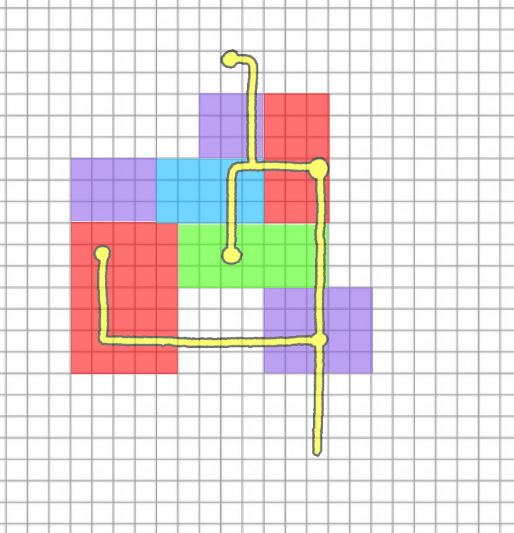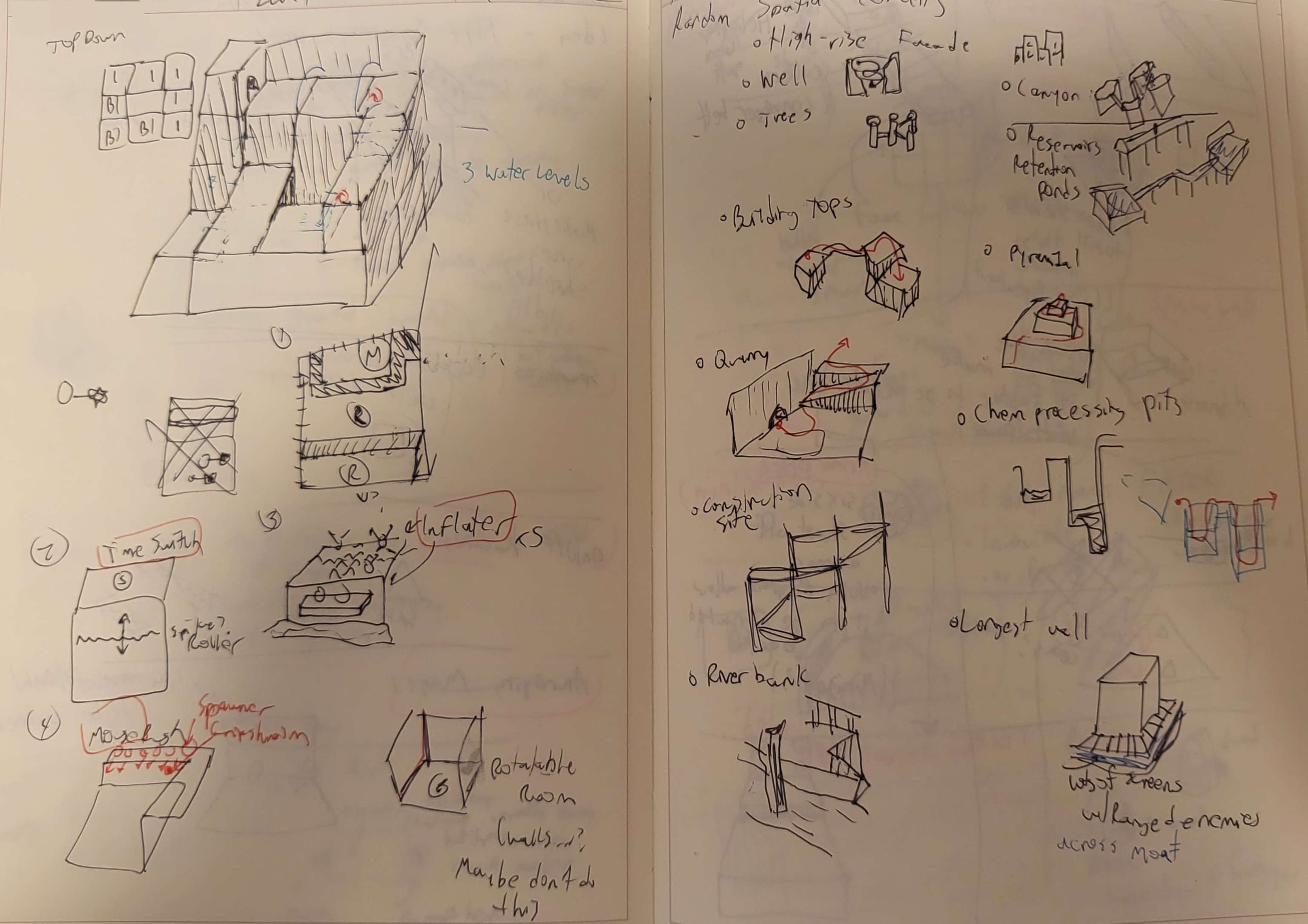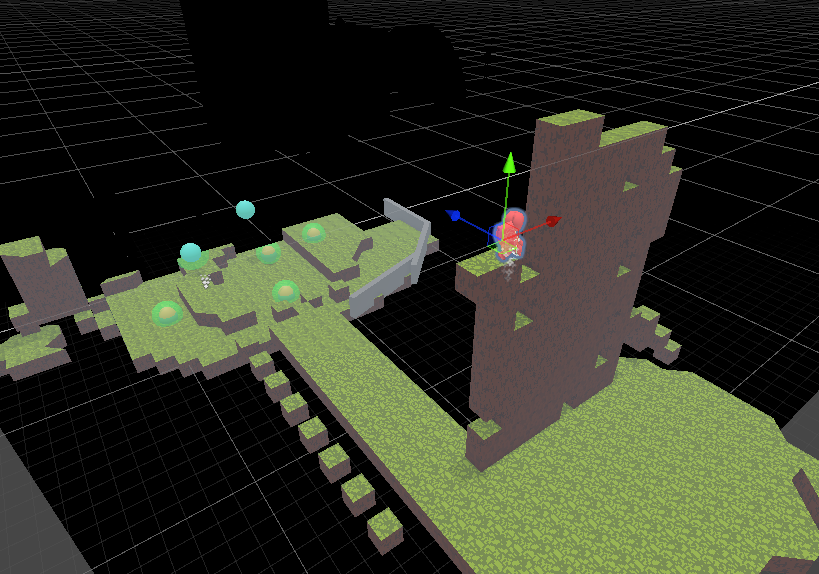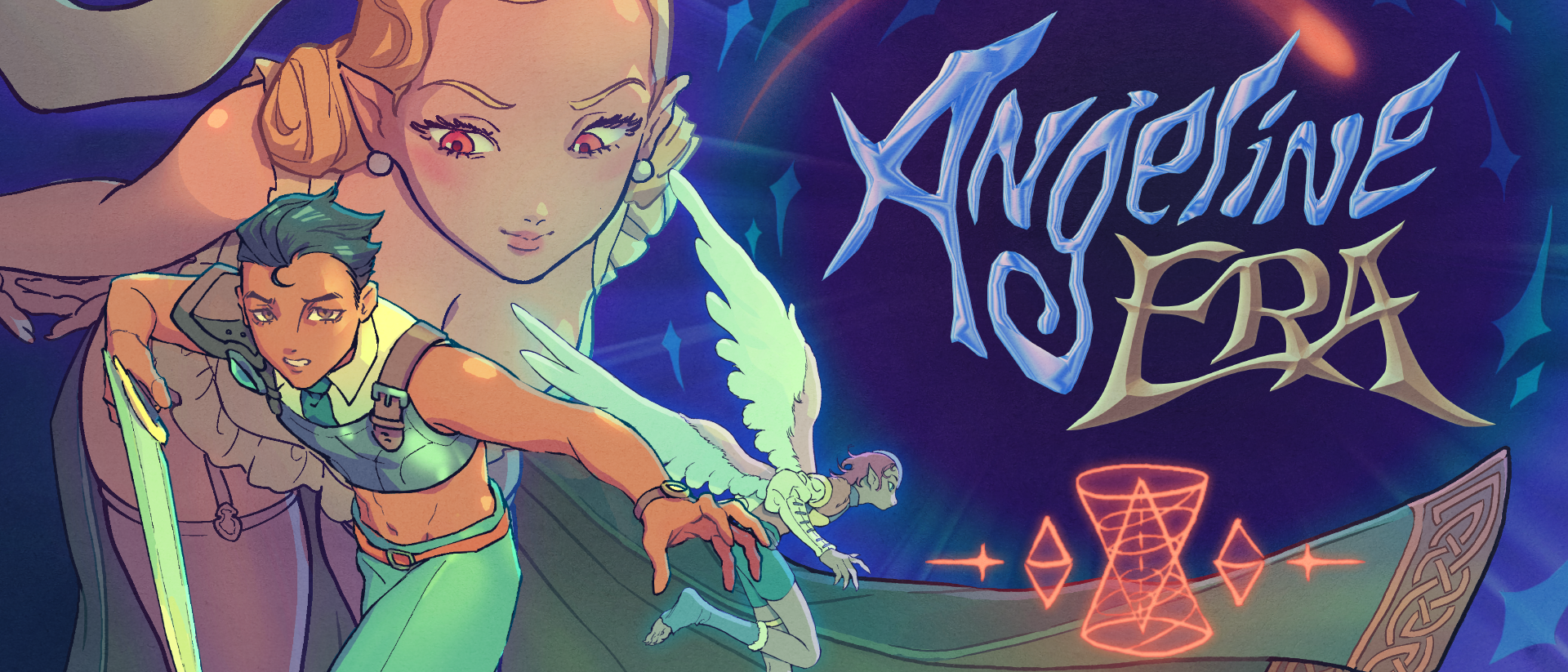[004] - Dev Timeline (Part 2)
Follow updates on my Substack: https://melodicambient.substack.com/
In Devlog [001] I discussed some of our early ideation of Game 5, through late 2020 and 2021. I'd like to introduce the concept of thegame's official name - at this point the game was being considered "NAME 1"... just keep that in mind!
Here's an overview of what we did on the game in the about the first half of 2022. (Mostly I want to write this up because if I don't get around to it now I'll just forget more and more! I feel like I'm always wondering if there's any patterns or knowledge I can dredge up from thinking about these early phases in making games...)
Over the first half of 2022, we went from all-out brainstorming, early prototyping and tool-creation, to making moves towards solidifying the game's core systems. But much of the game's overall progression, story direction, and feel, were still up in the air.
Cardinal
I forgot to mention this last time, but going into this year the protagonist's name was "Cardinal"... of course, it's not any more. The name came from end of 2020/early 2021 with an idea where the camera would rotate around the player in 90-degrees only. (Cardinal directions). I guess that's basically Brandish... anyways, there were other reasons, but we were calling the main character Cardinal for quite a while even after that mechanical idea vanished.
December 2021
A lot of bizarre ideas. One, while not particularly novel(?), involved corrupting save files to move to different rooms in the game. Another (which I'm still a fan of) involves a secret points counter that goes up for doing things in the game, and triggers random events. For example, if you accrue 100 Hidden Points, then a new type of enemy can spawn in Tall Grass. That kind of thing. We were curious about the idea of a game with lots of hidden stuff that's not missable. Of course, one balance issue that always comes up is "will this send someone running to the wiki?"
January 2022
Because we ended Dec 2022 thinking about 'lizard brain' motivation for playing games - we thought about the idea of having different "Zones" in the game that relate to why people play games - how people get pleasure. For example an area might be 'Gacha-roll' themed, another could be 'Gambling' focused, or others could be focused on "Capturing Monsters", or a place themed around Dating Sims... well, it's not to say that idea has totally vanished, but it definitely looks different in the current game! Each "Zone" of the game had people with different value systems... and a boss character who embodied those philosophies. For example, someone who loves open world Souls games probably has different priorities from someone who mainly plays Base-building games. Etc.
Also during this month, we were playing with character design - would there be a way to make iconic looking NPCs? Marina, inspired by childhood sketches, developed a 'Flare Head' idea. The idea is that, like sonic, it would be easy to be fan-art-able - and hopefully help with marketing. With the shift in story direction later we didn't go this route but maybe these sketches will be interesting to see:

This also reminds me of another bizarre idea we had at the time, which was that the "sections" of the game's overworld (it was planned to be laid out sort of like a 2D zelda overworld) would correspond to nodes on a skill tree. Doing things in each game area would unlock a corresponding node.. sometimes the skill tree would give hints. Perhaps, at other times (as this is a 3D game), a node on the skill tree would be visible but not unlockable, because the thing you need to do is located *above* you in 3D. Part of the inspiration came from the skill tree in Ring Fit Adventure. The rewards you got from 'nodes' would vary from story info, to stat upgrades, items, etc... maybe even NPCs showing up in the world.
Part of the idea was to consolidate the boring rhythm of most quest systems, and to simplify the idea of skill progression. (The game was intended to be very nonlinear, so it was also a way of tracking progress.) Well, we didn't end up doing this, but it's a fun idea to think about.
Here's a sketch of the 'world map/skill tree' system:

We also played with the idea of town systems, even crafting things (lol), resource collection. Of course we don't have that planned for the game now.
Marina also developed a plot with characters named A/B/C. Since we're not using this plot, I can talk about it a little.. the idea was that two of the characters were about to marry, but one runs off into this 'Underlay' world - sort of a mirror image of the real world, but with people's emotions and motivations just more...visible? Exposed? Tangible? I forget the details, but the game ends up being set-up by one of these characters, and is about their relationship. In the New Game Plus, you would be able to engage with the Zones in a slightly different way and even date or get closer to the Bosses. I think one of the main ideas was that to the protagonist, A, the "Underlay" feels like a cursed version of the real world - but the truth is that it's actually the real world... and perhaps A's way of viewing the world is off.
There were also a lot of system ideas relating to sleeping, 'energy costs', and your distance-from home being limited by level or whatever. For some reason we always get very enamored by stamina systems like those in games like Moon Remix RPG, but then they always get cut. Hm! There would be days and nights, resources respawning in the world based on time. Sleeping would help you be more efficient in combat, or something. Dungeons would have hotels? And then lock you inside until finishing? Well, it was a strange game idea at the time.
Mechanically, in January 2022, the game had sort of simple combat. Where you'd run around, press a button to swing a sword, then hold shoot, and control a gun reticle that would move around to shoot at things. This of course changed in the final game (the gun locks on to things in front of you and only shoots forward, you bump into enemies to slash at them). We had an idea where you could swing your sword at an enemy in the air and get a little jump boost from them, but this was removed in favor of being more economical with how movement happens along the vertical axis.
February 2022
We didn't work much on the game at this point as we were finishing up final things and testing for Sephonie, in preparation for beta testing, release, etc. However I did port over some code to the new game, and I was inspired a bit by Evergrace to consider having equippable items. We're only planning on equippable guns/weapons for the final game, but I found those early FromSoft action rpgs to be inspiring in their strangeness.
I think subconsciously in the background we were also trying to draw out ideas from our pool of ideas that seemed actionable... so there was a focus on kind of approaching the game as an action RPG.
Takeaways from the previous Period
I think the main interesting thing is probably the "Zones" - in a way they remind me how a core moveset in a game can shine in a variety of situations. So one of the focuses in the current game - an Action game with light RPG elements - is to figure out how we can shift the focus and philosophy of levels into different styles of play (that are still fundamentally action.) For instance, we can make linear, Mega-Man-esque levels - or more sprawling, Zelda-esque dungeons. Or we can make the game run in 2.5D-mode, and design places with more of a pacing of a Metroid 2... and so on. I'm hoping that keeps the game feeling exciting from an exploration standpoint without the action having to resort to tiring repetition...
April 2022
With Sephonie finalized in early April and shipping in April 12th, we were free to think more about Game 5 - which - was still called "NAME 1".
I spent this month drawing enemy ideas on paper, sketching out imaginary dungeons... just trying to get a feel for what situations in the game might feel like. We played various 3D action games looking for reference and inspiratioin.
We hashed out more of the practical visual issues with a top-down 3D game. E.g., stuff in a room behind you might cut into the camera. We ironed out some control toggles, played with other moveset ideas - e.g. early on there was a slide move and a groundpound move. Both ended up being too chaotic in the final battle system (with not much practical use), so we ultimately removed both (the slide lasted for a few more months, the groundpound got cut around the end of 2022.) I think they'd fit great into a more kind of numbers-go-up, bombastic-but-janky sort of game, maybe? In any case it definitely makes design easier when we have less moves to think about.
We also were thinking about various books - I recall Tara Fickle's Race Card came up. We thought about the theming relating to the game's 'cursor' (At some point the game had a partial title of "Cursor Blessing"...get it? H a ha ha..). I worked on coding of enemies to try and figure out how to best make a 'generic' Enemy code that would make making enemies quicker.
May 2022 - Pre-production starting!
I think around here is when we really started going into full pre-production, with Sephonie done. In particular what happens here is that the ideas in... the ideation? or prototyping? phase start to shift more towards 'Having to become an actual game." So the crazier stuff tends to get rethought, consolidated or cut, as we work things into a playable form.
I began to brainstorm more shapes and 'styles' of levels that I think would fit into the action-y, top-down 3D form. For example, what would "Building Tops" feel like? A pyramid? A rock quarry? Construction sites, river banks? Brainstorming this along with brainstorming and coding other enemy ideas allowed the game's level design/enemy design to feel more concrete.
Left: Random ideas relating to dungeons from April 2022, imagining what a 3D dungeon with height would feel like
Right: various "Spatial ideas" and shape ideas for levels.

I also brainstormed level ideas that ended up being cut - stuff that strayed a bit too far from the main core of the game, for example, an area inspired by Harvest Moon mines and Roguelikes that was built around all sorts of different room situations you'd run into while going down into a mine. The idea ran a bit too far into seeming like a game of its own, but the ideas still exist partially in a level in the current game.
In may we finalized more of the camera code - as the level design concepts took more form. Marina was doing animation and character size tests, we played with some other mechanics that got scrapped, and I optimized the Cubemapper tool, adding various functions.
I made some more enemies, and created a framework for enemy logic that made it easier to create enemy types. One of the more gimmick-focused levels was planned (which will appear in the final game so I can't talk too much!), and overall just 'game-y' code was done - stuff like scene loading, etc. Making lots of enemies was great for getting a sense of how the combat in the game feels when you're fighting multiple enemies at once.
At this point I was building small chunks of test areas, enemies, etc, but it wasn't till June that I would start trying to approach level design.
I also made some non-enemy entities that could be used to change up the level pacing. E.g., a button you have to shoot with your gun to open a gate - but the button has HP And it heals over time. So you have to shoot it enough before it fully recovers - which can be tricky with enemies in the room.

BUMPSLASH COMBAT
Perhaps the most important thing that happened here was that I got Marina to play Ys Oath in Felghana and that helped draw into focus the pacing of combat we wanted. For one, we removed some excessive moves, we increased the movement speed and pace of combat. But more importantly, we realized that 'pressing A to attack" was kinda messing with pacing, so we decided to take inspiration from Ys 1/2 and create a "Bumpslash" system.
The bumpslash system (which I might have called bump combat in the past, but we switched to bumpslash), is a system where you walk into an enemy to slash them - no 'slash' button required. If you have higher poise than the enemy, you don't bounce back as much - meaning you can attack faster. If you have lower poise, you bounce back a lot! This can be dangerous in situations with lots of enemies. If you bump an enemy into a wall, you do a critical attack. But the same happens to you! If an enemy bumps you near a wall, you'll take more damage.
So the game has this high level of spatial awareness that appears - where the enemy movements matter as much as the placement of level geometry.
Of course, this is all great, but if you recall the rest of the game was in a pretty uncertain state. We had all these strange progression, world design ideas, and more, which I'll talk about next time. While they all seem fun in theory, with the core of the game's action solidifying, we also needed to make the other parts of the game solidify, too!
In the next 'dev timeline' devlog, I'll talk about how those ideas got pared down, and how the story took direction as well, discussions that would take us into researching various books, and even travelling to Ireland!
Get Angeline Era
Angeline Era
Every level is hidden in plain sight in this nonlinear 3D Bumpslash Action-Adventure game!
| Status | In development |
| Author | Melos Han-Tani |
| Genre | Adventure, Action |
| Tags | 3D, Action-Adventure, Low-poly, Open World, Retro |
| Languages | English, Japanese, Portuguese (Brazil), Chinese (Simplified) |
| Accessibility | Color-blind friendly, Configurable controls |
More posts
- Releasing December 8th!24 days ago
- Demo released on steam!May 09, 2024
- Demo coming to steam 5/9!Apr 29, 2024
- [007] Dev Timeline (Part 4 - Level Design + Ireland Research Trip!)Jan 19, 2024
- Angeline Era announced!Jun 12, 2023
- [006] - Developing an Action Game's Moveset (Dev Timeline Part 3)May 21, 2023
- [005] Combat System (1) - Poise and ClarityMar 10, 2023
- [003] Leveling CurvesJan 26, 2023

Comments
Log in with itch.io to leave a comment.
Really enjoying these devlogs, and very much looking forward to Game 5!
I'm curious how you two go about honing in on the focus of your games. It feels like there are countless possible directions to take things when designing, especially in the beginning, but even in later stages.
How do you decide what to focus on and what to strip away? How do you avoid spending a bunch of time developing foundational things (mechanics, story ideas, level design philosophy, etc) that end up getting scrapped? How do you know/evaluate the appropriateness of such things?
Hi Chris! Thinking back on Anodyne 2/Sephonie/Game 5, I feel like we tend to do this 'dance' between different poles of focus - core gameplay (e.g... platforming in sephonie), 'secondary gameplay' (e.g., level design philosophy, how many levels, vibes, world design in sephonie), and the story. Often getting excited and brainstorming widely on one of these poles will lead to the 'practical concern' of one of the other poles. Depending on the time we might shift focus, or let time pass, and in the process, we'll forget a bit about one of the poles we had worked on. Over time, the more interesting ideas remain while the others tend to drift away.
Eventually though we do have to stop thinking widely and we try to solidify some aspect. So far this has always been the story or the gameplay-core - the systems tend to require a bit more concrete in story or gameplay-core in order to actually become tangible.
I would say that we kind of do this (often we try to brainstorm rough plots and characters when it comes to story) a few times (or maybe just infinitely, but in smaller magnitudes, until the game is done.
Brainstorming the secondary gameplay too much, I think, tends to lead to the most time wasted, but we also get a lot of wild/interesting ideas. It's kind of like the difference between designing "The Jump" of a game vs. "Where The Jump Happens"... any platformer inevitably needs a Jump, but you sort of need to think wildly about 'where the jump happens' to make anything interesting in the end outside of a tech demo. But if you only ever dream about "Where The Jump Happens" then nothing will ever take form.
I think the balance (which is hard to find as every project is different!) is to not get too invested in any one 'secondary gameplay idea'... since world design and like, progression systems or whatever, can change really quickly according to the demands of other things.
--
If I had any reflections now, as we're edging more into production of Game 5, I think we tend to waste too much energy with the really really early brainstorming? E.g. Late 2020 and early 2021. That's not to say it's a complete waste, but I do think I, at least, need some period of consistent time where I'm able to make progress on something concrete (a story plot or a gameplay prototype), while also being able to jump around to the wide brainstorming. Rather than focusing on one of these things, forgetting about the project for a month, etc. A lot of the extremely early ideas for Game 5 didn't amount to much, except maybe some thematic concerns, and maybe the visual style being 3D somehow.
I haven't talked about it yet, but we had a weird turn of events with the story in this game. Usually the story undergoes one major revision, after the gameplay has gotten its feet and we can figure things out better - but Game 5 went through one and is going through a relatively minor (though important) one. It's related to the setting which veered into the overly-realistic-historical, before we realized that it was causing issues with how widely we could think about writing and gameplay. So we've steered it back towards the more fantastical while trying to preserve the historical research/themes we're interested in.
When it comes to that, I guess it's a matter of philosophy... I think that when it comes to games, if a story or writing style is restricting the gameplay (e.g. "Wait, wouldn't this enemy acting like this seem too strange?") - if the gameplay is 'begging' to go in a direction, but it doesn't 'fit' the setting or something... then something in the story has got to go or change, and that's what we're doing with Game 5.
Thank you for such an insightful response! I suppose every game probably goes through a shifting of focus/identity throughout development, but I find it particularly interesting to hear how it has happened with Analgesic's games, which I've always felt present such a clear picture of what they are.
Excited for more Game 5 devlogs!